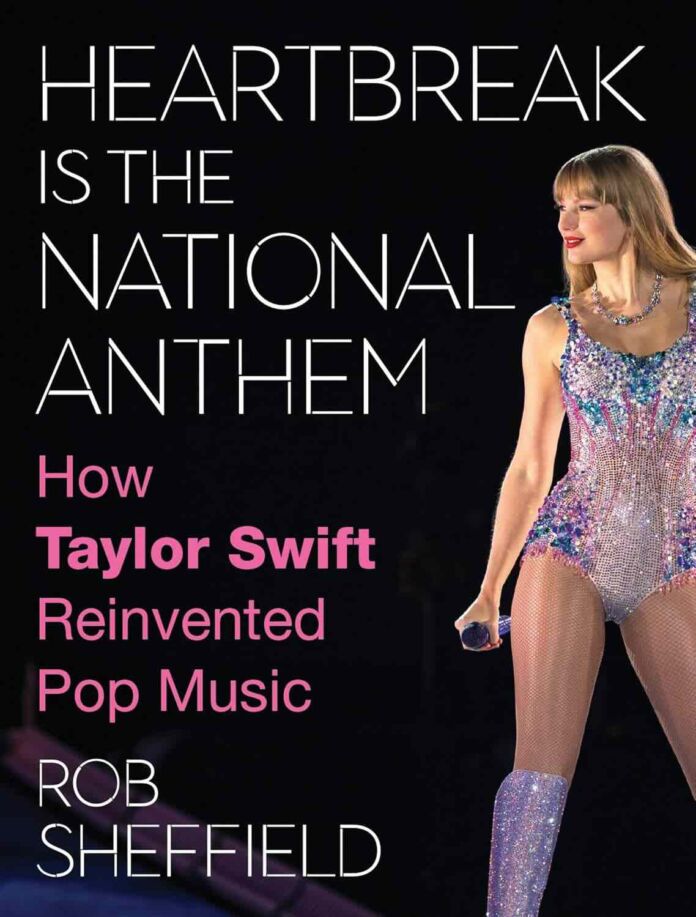In “Heartbreak Is the National Anthem,” veteran music journalist Rob Sheffield crafts an intricate portrait of Taylor Swift that goes far beyond the usual celebrity biography format. Drawing from his years of covering Swift’s career at Rolling Stone, Sheffield weaves together cultural criticism, musical analysis, and sociological insight to examine how a teenage country singer became one of the most significant cultural forces of our time.
Writing Style and Structure
Sheffield’s writing shines with his signature blend of scholarly depth and conversational warmth. He structures the book chronologically but allows himself to spiral off into fascinating tangents about everything from the history of New Romanticism to the sociology of teenage fandom. His approach mirrors Swift’s own songwriting style—deeply personal yet universal, filled with specific details that illuminate larger truths.
The book’s organization around Swift’s various “eras” provides an effective framework while allowing Sheffield to explore broader themes about artistry, fame, and cultural impact. His chapter titles often playfully reference Swift’s lyrics, showing his deep familiarity with her work while maintaining critical distance.
Strengths
- Sheffield’s encyclopedic knowledge of pop music history allows him to place Swift’s work in a broader cultural context
- Thoughtful analysis of Swift’s songwriting evolution and business acumen
- Rich exploration of fan culture and its role in Swift’s success
- Compelling arguments about Swift’s impact on the music industry and popular culture
Critical Analysis
While Sheffield’s admiration for Swift is clear, he doesn’t shy away from examining controversial moments in her career. His discussion of the “Villain Era” and various public feuds is particularly nuanced, considering multiple perspectives while avoiding tabloid sensationalism.
The book occasionally meanders into overly detailed musical analysis that might lose general readers. Some may find Sheffield’s extensive references to other artists and cultural touchstones overwhelming, though they generally serve to illuminate his points about Swift’s artistic evolution.
Notable Insights
- Swift’s relationship with her audience as a collaborative storytelling experience
- The role of social media and digital culture in shaping her career
- Her impact on the business side of the music industry
- The evolution of her songwriting techniques and thematic concerns
Cultural Context
Sheffield excels at examining how Swift both reflects and shapes contemporary culture. His analysis of how she navigates gender expectations, celebrity culture, and artistic authenticity is particularly strong. He makes compelling arguments about her influence on younger artists and the changing landscape of pop music.
Audience Appeal
This book will naturally appeal to dedicated Swift fans, but Sheffield’s broader cultural analysis makes it valuable for anyone interested in contemporary pop culture, music industry dynamics, or artistic evolution in the digital age.
Style Comparisons
Sheffield’s previous works, particularly “Love Is a Mix Tape” and “Dreaming the Beatles,” share his ability to combine personal narrative with cultural criticism. However, “Heartbreak Is the National Anthem” feels more focused and analytical, perhaps reflecting Swift’s own evolution from country ingénue to pop culture phenomenon.
Minor Shortcomings
- Some readers might wish for more direct quotes from Swift herself
- Occasional repetition of certain themes
- The book’s current events coverage may date quickly
- Some cultural references might be too obscure for younger readers
Impact and Relevance
Sheffield makes a compelling case for Swift’s historical significance while acknowledging that her story is still unfolding. His analysis of her impact on the music industry, particularly regarding artistic ownership and the value of catalogs, feels especially timely.
Conclusion
“Heartbreak Is the National Anthem” succeeds as both a critical analysis and a celebration of one of pop music’s most fascinating figures. Sheffield’s deep knowledge, engaging writing style, and thoughtful analysis make this an essential read for understanding not just Taylor Swift, but the evolving landscape of popular culture in the 21st century.
Strengths:
- Insightful analysis
- engaging writing style
- strong cultural context
Weaknesses:
- Occasional meandering
- some repetition
- niche references
Recommendation
Highly recommended for Swift fans, music journalists, and anyone interested in contemporary pop culture. Sheffield’s expertise and engaging writing style make complex cultural analysis accessible and entertaining.
Similar Books
- “Meet Me in the Bathroom” by Lizzy Goodman
- “Love Is a Mix Tape” by Rob Sheffield
- “Girls to the Front” by Sara Marcus
- “Why Sinéad O’Connor Matters” by Daphne Brooks





